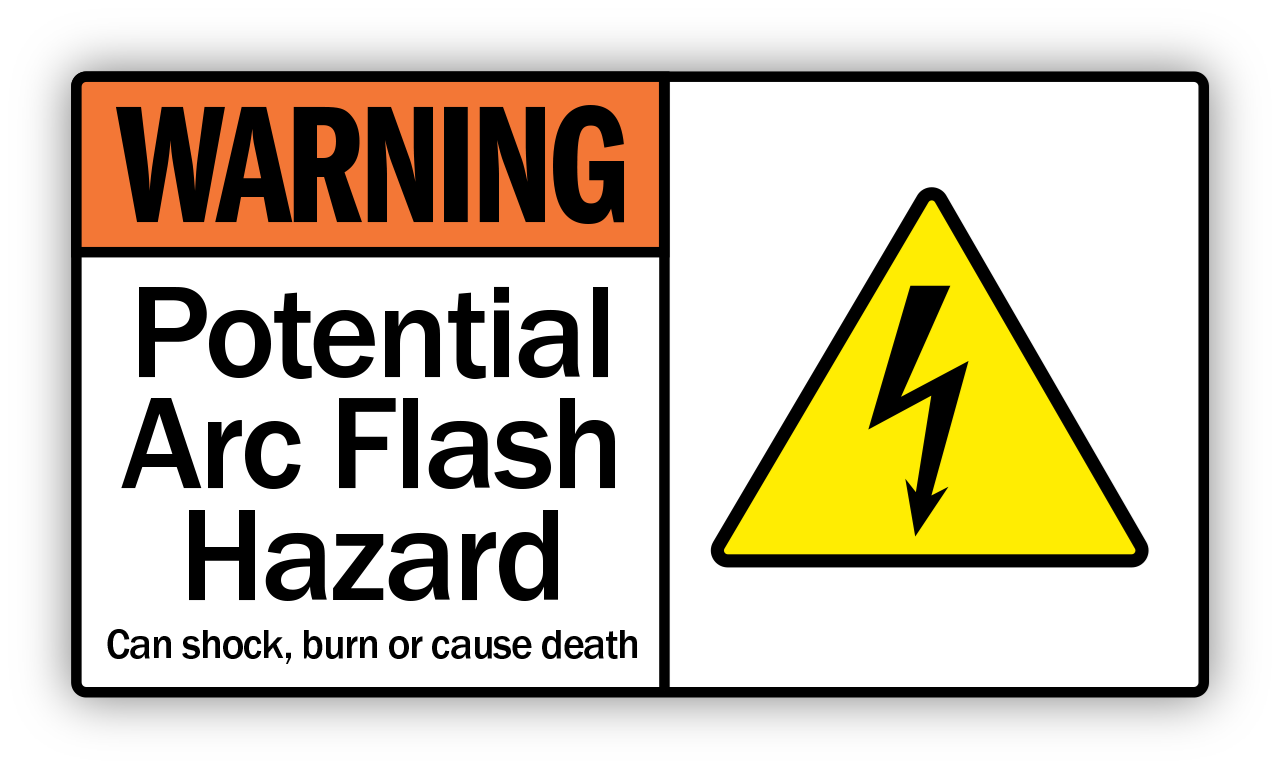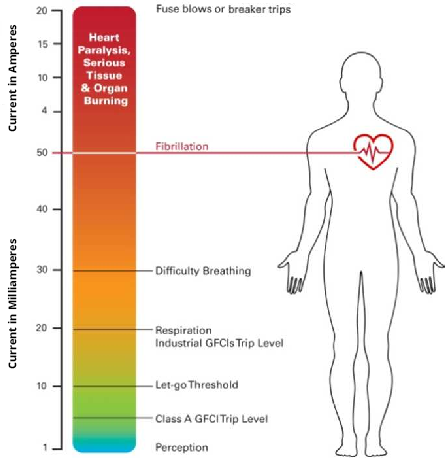
General Hazards and Risks
While airport lighting systems pose a number of unique hazards and challenges, the electrical hazards involved hold out the same dangers of injury or death. There are four general electrical hazards of concern while working with airport lighting systems: electric shock, arc flash, arc blast, and fire.
Electric Shock*
To eliminate the hazards of electric shock, it is important to know the following:
- The source of the hazard
- How the exposure could occur
- How severe the shock would be to the human body
- What action is necessary
To mitigate exposure to electric shock, one should consider:
- Can the circuit be de-energized?
- If not, what must be done to minimize the hazard?
- What personal protective equipment (PPE) will minimize the exposure?
*Duluth International Airport. Airfield Lighting Electrical Safety Program, July 24, 2007.
Arc Flash*
Arc flash is defined as follows:
When an electric current passes through air between ungrounded conductors or between ungrounded conductors and grounded conductors, the temperatures can reach 35,000°F. Exposure to these extreme temperatures both burns the skin directly and causes ignition of clothing, which adds to the burn injury. The majority of hospital admissions due to electrical accidents are from arc-flash burns, not from shocks. Each year more than 2,000 people are admitted to burn centers with severe arc-flash burns. Arc flashes can and do kill at distances in excess of 10’.
The degree of arc flash potential should be determined by a qualified electrical engineer and posted, along with PPE requirements, on the cabinet of all electrical equipment as recommended by the Occupational Safety and Health Administration (OSHA) and the National Fire Protection Association (NFPA) 70E.
*National Fire Protection Association. NFPA 70E, Standard for Electrical Safety in the Workplace®. Annex K.
Arc Blast*
An arc blast occurs when the tremendous temperatures of the arc cause the explosive expansion of both the surrounding air and the metal in the arc path. For example, copper expands by a factor of 67,000 times when it turns from a solid to a vapor. The dangers associated with this expansion include high pressure, sound, and shrapnel. The high pressure can easily exceed hundreds or even thousands of pounds per square foot, knocking workers off ladders, rupturing eardrums, and collapsing lungs. The noise can exceed 160 dB. Finally, material and molten metal is expelled away from the arc at speeds exceeding 700 mph, fast enough for the shrapnel to penetrate the body.
The degree of arc blast potential should be determined by a qualified electrical engineer and posted along with PPE requirements on the cabinet of all electrical equipment as recommended by OSHA and NFPA 70-E.
*National Fire Protection Association. NFPA 70E, Standard for Electrical Safety in the Workplace®. Annex K.
Fire*
Electrical systems are a significant source of fire. This electrical safety resource will not address this hazard directly, since fire hazards are broadly addressed in other sections of airport safety policies.
*Duluth International Airport. Airfield Lighting Electrical Safety Program, July 24, 2007.
